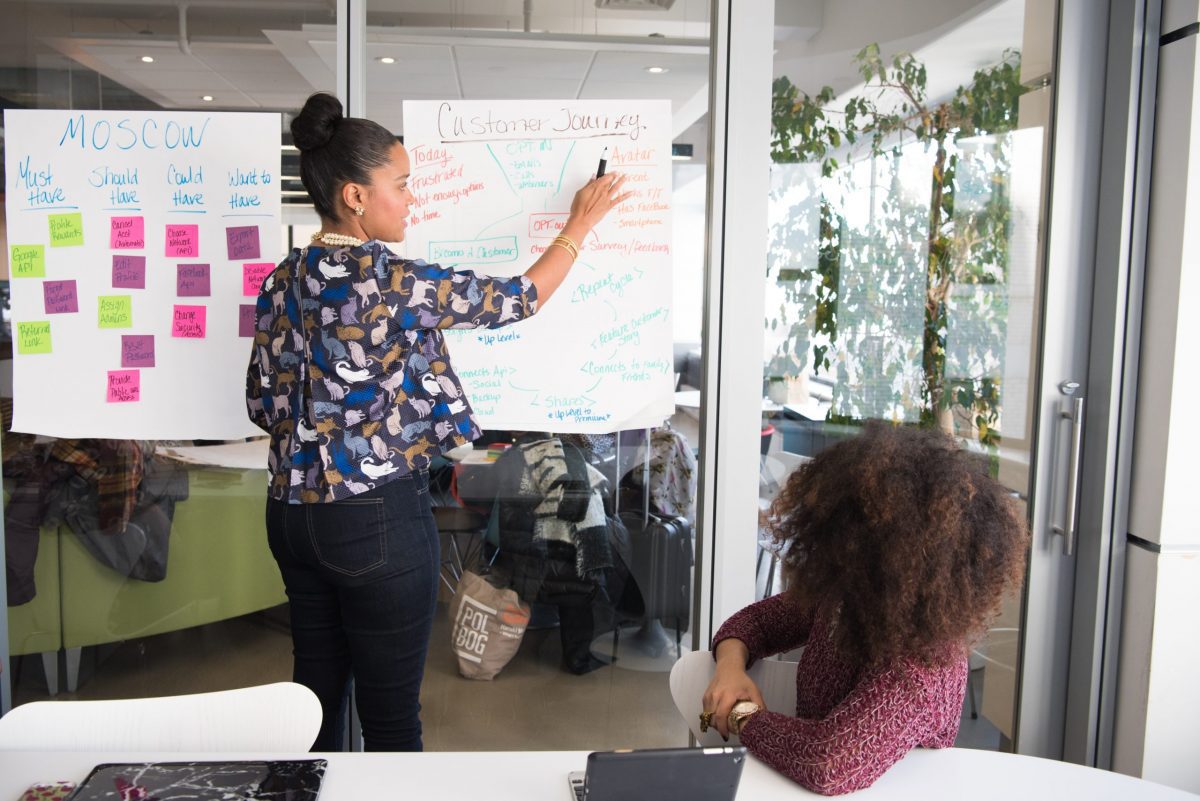The first 100 days of any CEO are usually a watershed moment for the new incumbent, the leadership team, and the company. In this article, first in a series of three, we lay out what we believe makes a clear roadmap to success. We have accompanied numerous executive committees through this new leadership team journey. Their powerful testimonials about its contribution to achieving extraordinary business results, improving team cohesiveness, and growing as individual leaders, inspired us to share the approach more broadly for others who may benefit from the lessons learned.
This unique journey is like a climbing voyage, with all eyes on the summit. However, the climb starts at base camp, that meeting place where we begin the expedition and prepare for a daring feat. Here is where we encourage them to discuss crucial questions in a metaphorical fireside chat:
▶️ To whom are we roped? 
▶️ What are we climbing for?
▶️ What unnecessary weight can we leave at the foot of the mountain?
▶️ What will we hang on to when things go awry?
The answers to these questions set up the expedition for success. But before they start, the team needs to carefully choose what they will take in their backpacks and what to leave behind. So load doesn’t turn to burden, each member of the team needs to ask themselves the following:
▶️ What skill sets can I contribute to this expedition?
▶️ Which abilities should I acquire or enhance?
▶️ What baggage am I carrying that can become a liability?
▶️ Which frameworks, experiences, and techniques can be helpful?
Once the leader’s backpack is ready, it is vital to help the team get their own ready as well. This may be the moment to consider finding trustworthy guides to lighten the load and get well equipped for the climb. At Axialent, you will find seasoned ‘Sherpas’ for journeys like this, who ascend alongside each individual participant and equip them with the necessary tools that will help them identify their own assets and liabilities as climbers.
Then they are ready to climb!
At Axialent, we’ve increasingly set out to reach the leadership team summit in five stages, inspired by the work of Patrick Lencioni on cohesive teams:
- We always begin with trust. Without it, the way forward will be overly cumbersome. Building trust will help us every step of the way.
- When there is trust, we can deal with conflict constructively. We see conflict on a spectrum, where both extremes (denying conflict out of avoidance, to downright explosion) are unhealthy.
- A team that manages conflict constructively can truly commit. Authentic commitments require a clear request, an equally explicit acceptance of the request, and all team members’ buy-in.
- Practicing accountability is the next stage. The team embraces it to ensure their commitments are honored, even (or especially) when they cannot fulfill them.
- The expedition reaches the peak when it can focus on its collective results rather than the individual goals of its members.
Two tracks across the five stages of the leadership team journey
We like to say that we climb these stages with the CEO and their team following two distinct, yet interwoven paths: the individual and the collective tracks. Each leader works individually with a personal coach (who we called Sherpa above) on their development goals. In the collective track, the leadership group participates in team coaching to work on their dynamics and interactions as a group. These collective sessions are often co-facilitated by the different Sherpas assigned to the various members of the team to allow for diverse vantage points for richer observation and broader context.
We approach each of the five stages based on the following premise: as experts, we reserve the professional judgment to draw on the frameworks, distinctions, and techniques that will build the skills and capability that each team requires at a given point in time. How do we know? By running individual and group diagnostics upfront and at the end of each journey. This provides rich context to draw on, thus shaping the content to fit this particular team like no other.
At Axialent, one of our deeply held principles is believing in context before content. We go one step further. We also believe in connection before context. Therefore, when we accompany a leadership team in their first 100 days to the summit, we make it a point to start with a virtual coffee where each expedition member meets and greets the Sherpa who will be ‘climbing’ with them.
In the next couple of weeks, we will share the next article of this series, where we explain what happens at the peak and how the new CEO can tackle the leadership team’s safe descent back to base camp. Stay tuned for the Next 100 Days of a new CEO!


 It is about PROACTIVELY CREATING change in uncertain and disruptive environments. Different from resilience, it is about REACTIVELY RESPONDING to change in a constructive way.
It is about PROACTIVELY CREATING change in uncertain and disruptive environments. Different from resilience, it is about REACTIVELY RESPONDING to change in a constructive way.
 Organizations place a lot of value on leaders who can effectively lead others through change. In fact, effective change leadership is a common competency used to identify and develop high potential employees.2 However, despite the importance that both leaders and organizations place on change leadership, many organizations lack an intentional strategy to help their leaders become effective change-makers. Many of us are guilty of having used the ‘sink or swim’ approach disguised as ‘on the job learning’. Intentionally or not, we throw our up-and-coming talent into leading changes in an environment that is increasingly complex and unpredictable without the benefit of a foundation to help them along the way.
Organizations place a lot of value on leaders who can effectively lead others through change. In fact, effective change leadership is a common competency used to identify and develop high potential employees.2 However, despite the importance that both leaders and organizations place on change leadership, many organizations lack an intentional strategy to help their leaders become effective change-makers. Many of us are guilty of having used the ‘sink or swim’ approach disguised as ‘on the job learning’. Intentionally or not, we throw our up-and-coming talent into leading changes in an environment that is increasingly complex and unpredictable without the benefit of a foundation to help them along the way.





 In over 15 years of leading global remote teams, I have experienced firsthand how critical this is for the success and wellbeing of a team, its leader, and the organization. Your ability to have respectful, compassionate, honest, and straightforward conversations online will shape your culture and be a key lever for a high performance.
In over 15 years of leading global remote teams, I have experienced firsthand how critical this is for the success and wellbeing of a team, its leader, and the organization. Your ability to have respectful, compassionate, honest, and straightforward conversations online will shape your culture and be a key lever for a high performance.







